Best Fabric for Veteran Shirts: Your Complete Guide to Material and Size Selection (2025)
Discover the best fabrics for veteran shirts in 2025. Learn how to choose the right material, fit, and size for comfort, quality, and lasting pride.

Blog Post Contents
You bought a veteran shirt online. It looked perfect. Then you washed it once and it shrank two sizes, felt scratchy, or fit completely wrong.
Most buyers focus on design—the eagle, flag, branch insignia—and ignore fabric quality and sizing. They end up with shirts they never wear.
The best fabric for veteran shirts depends on how you'll use them. Cotton breathes but shrinks. Polyester lasts but traps heat. Blends balance both. Tri-blends feel premium but cost more.
This guide shows you exactly which material fits your needs and how to choose the right size.
Why Material Matters: The Real Cost of Cheap Fabric
Fabric determines three things: comfort, durability, and appearance after washing.
Cheap materials create problems:
- Cotton shrinks 5-7% (a Large becomes a Medium)
- Polyester traps sweat during summer events
- Poor blends pill after three washes
- Thin fabric shows undershirts
Quality materials deliver value:
- Tri-blends maintain shape for 200+ washes
- Premium cotton stays soft through years of wear
- Good polyester wicks moisture during physical activity
- Proper blends resist fading better than pure fabrics
A $35 tri-blend you wear 100 times costs less per wear than a $15 cotton shirt you donate after ten washes.
The Four Main Fabric Types: What Actually Works
100% Cotton: The Classic Choice
What it is: Pure cotton fibers, no synthetic materials.
Why veterans prefer it: Soft, breathable, traditional military feel. Many veterans grew up wearing cotton undershirts in service.
Performance:
- Breathability: Excellent (best for hot weather)
- Durability: Moderate (weakens when wet, wears at stress points)
- Shrinkage: 5-7% after first wash
- Care: Requires pre-shrinking, wrinkles easily
- Moisture: Absorbs sweat but stays damp
Best for: Indoor wear, temperate climates, traditional styling, people with polyester sensitivity.
Not ideal for: Humid environments, athletic activities, travel (wrinkles in luggage), anyone who hates ironing.
Price range: $15-22 for quality options (Gildan 5000, Hanes Beefy-T).
Buying tip: Order one size up, wash in hot water before first wear to pre-shrink. After that, cold water only.

100% Polyester: The Performance Option
What it is: Synthetic fibers engineered for durability and moisture management.
Why it works: Military uses polyester in modern PT uniforms because it handles sweat and repeated washing better than cotton.
Performance:
- Breathability: Poor (traps heat next to skin)
- Durability: Excellent (resists tears, maintains shape 300+ washes)
- Shrinkage: Less than 1%
- Care: Wrinkle-resistant, quick-drying
- Moisture: Wicks away from skin
Best for: Outdoor events, athletic activities, humid climates, frequent washing, printing detailed graphics (holds ink better than cotton).
Not ideal for: All-day wear in heat, sensitive skin (some find it scratchy), formal memorial services (looks less traditional).
Price range: $18-26 for athletic-grade fabric.
Buying tip: Look for "moisture-wicking" polyester, not cheap promotional shirt polyester. The difference is significant.
Cotton-Polyester Blends: The Practical Middle Ground
What they are: Mixed fibers that balance cotton comfort with polyester durability.
Common ratios:
50/50 Blend: Equal cotton and polyester ($20-27)
CVC Blend (60/40): More cotton for softer feel, less shrinkage than 100% cotton ($20-27)
Performance:
- Breathability: Good (better than pure polyester)
- Durability: Very good (polyester strengthens cotton)
- Shrinkage: 2-4% (manageable with proper care)
- Care: Minimal wrinkling, faster drying than cotton
- Moisture: Moderate wicking with some absorption
Best for: Daily wear, unpredictable weather, budget-conscious buyers, mixed indoor/outdoor use.
Not ideal for: Maximum softness (tri-blend wins), extreme athletic performance (pure polyester wins), people who want purely natural fibers.
Price range: $20-27 for quality blends.
Buying tip: CVC (60/40) gives you more cotton softness while keeping polyester benefits. Better investment than 50/50 for most buyers.
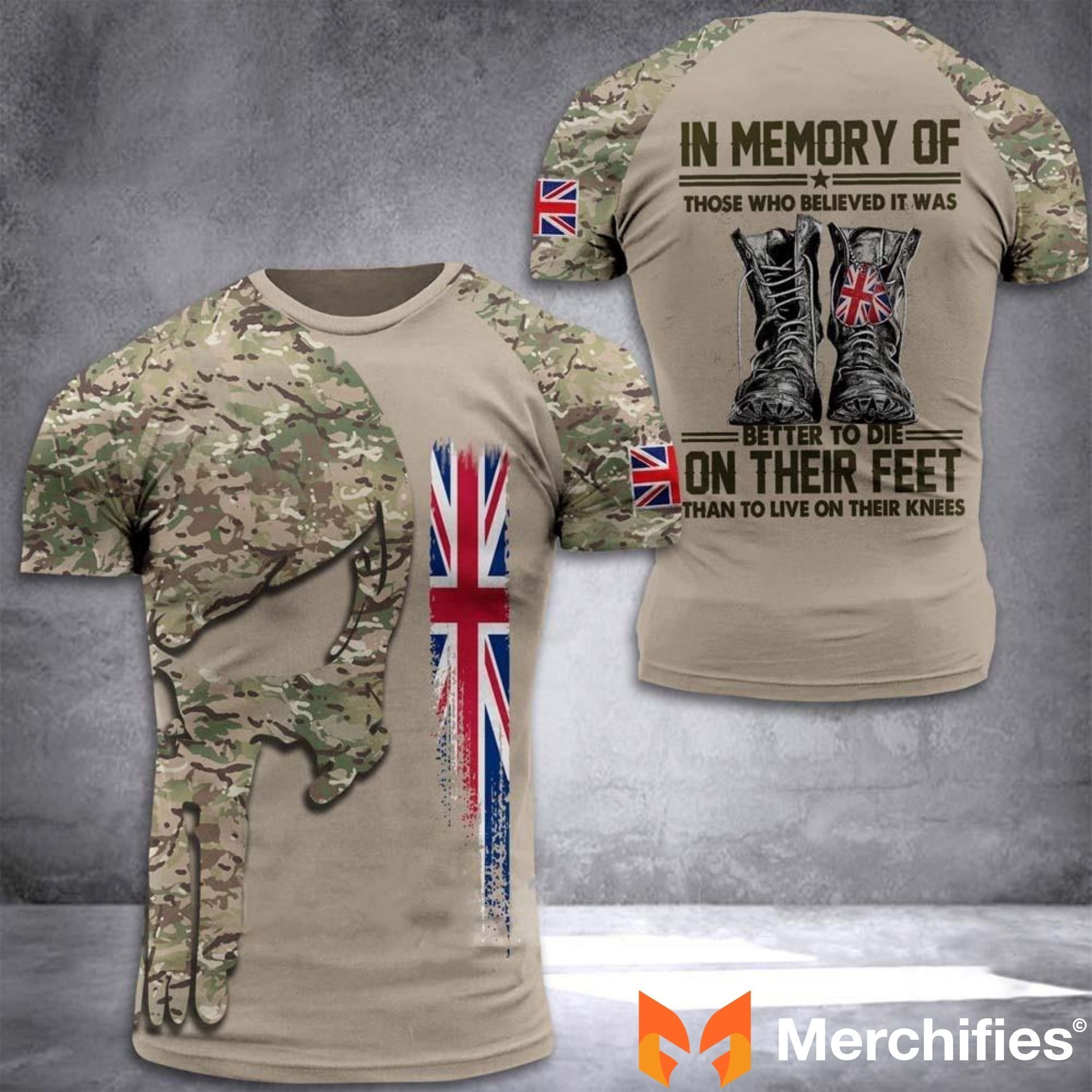
Tri-Blend: The Premium Experience
What it is: 50% polyester, 25% cotton, 25% rayon. Each fiber contributes specific properties.
Why it costs more: Three fibers cost more to source and blend, but create superior fabric that outperforms single-material shirts.
Performance:
- Breathability: Excellent (rayon adds airflow)
- Durability: Excellent (polyester backbone with soft face)
- Shrinkage: 1-2% (minimal)
- Care: Holds shape, resists wrinkles, maintains softness
- Moisture: Good wicking with comfortable feel
The tri-blend advantage:
Rayon creates drape and flow (doesn't cling to body)
Stays softer after 50+ washes than cotton after 10 washes
Colors look richer and fade slower
Feels broken-in from first wear
Best for: Shirts you'll wear frequently, gift-giving (universally appreciated), all-day comfort, anyone who values feel over price.
Not ideal for: Tight budgets, buyers who wash in hot water (rayon needs cold water), people unconcerned with fabric quality.
Price range: $28-38 for premium brands (Bella+Canvas, Next Level, American Apparel).
Popular brands veterans trust: Grunt Style uses tri-blend for premium lines, Nine Line Apparel features tri-blend options, Ranger Up offers tri-blend for signature designs.
Is tri-blend worth the extra cost? Higher satisfaction rates, 2-3x longer wear life than cotton, and premium feel justify the price for frequently worn shirts.
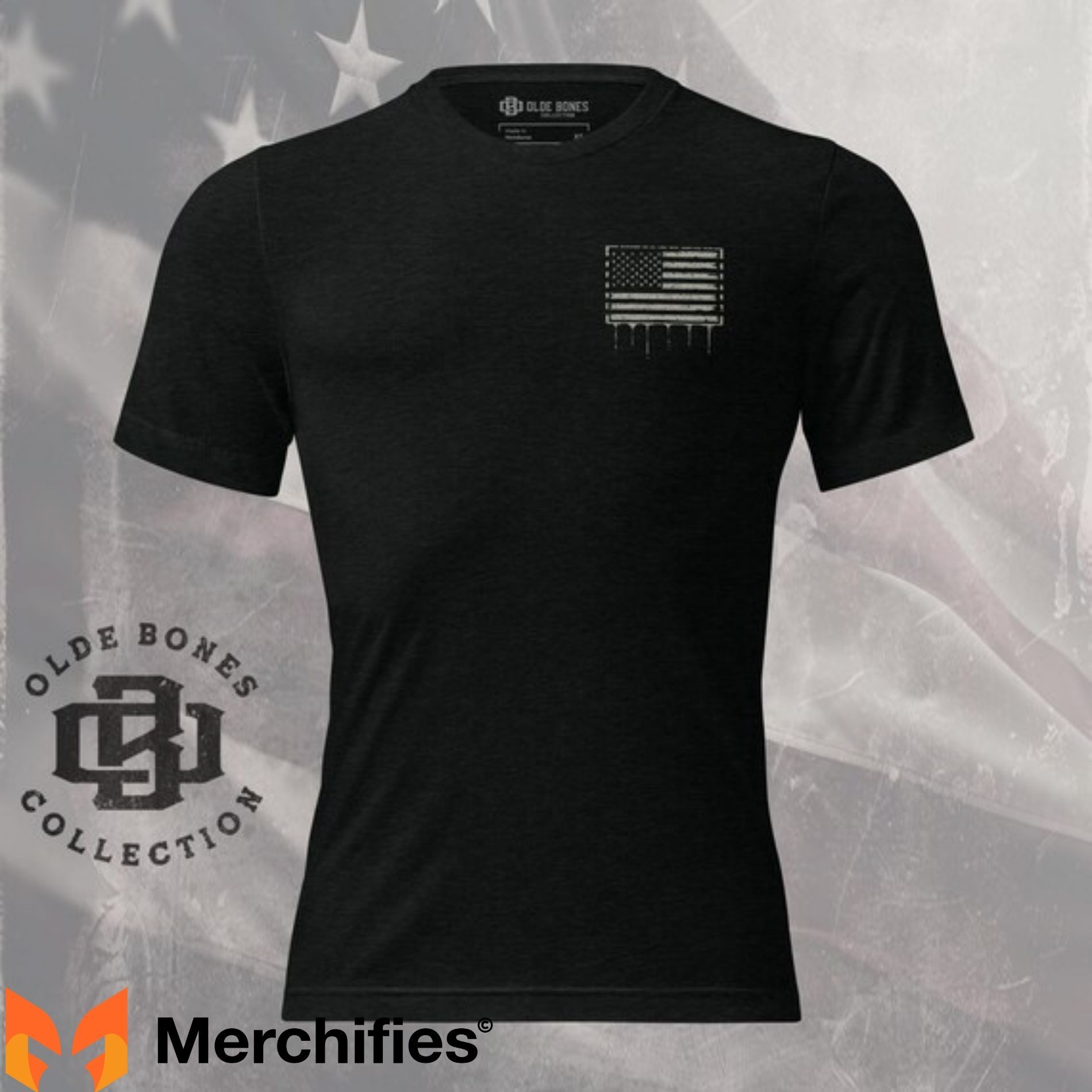
How to Choose the Best Fabric for Your Needs
Match Material to Activity Level
Your activity level determines the best material choice. What you'll actually DO in the shirt matters more than anything else.
Casual everyday wear: Choose 100% cotton or CVC blend. You're running errands, sitting in meetings, hanging out at home. Breathability and all-day comfort matter most. Cotton's natural feel works perfectly when you're not sweating. CVC gives you cotton comfort with better durability.
Active and athletic use: Choose 100% polyester or tri-blend. You're hitting the gym, going for runs, playing sports. Moisture-wicking becomes essential. Cotton-soaked shirts feel miserable. Polyester keeps you dry. Tri-blend offers moisture-wicking plus premium comfort.
Special events and retail: Choose tri-blend. You're attending veteran gatherings, selling merchandise, giving gifts. The premium feel makes an impression. People remember quality. The elevated appearance justifies the price for occasions where presentation matters.
Work uniforms: Choose 50/50 or CVC blend. You need multiple shirts, they'll be washed constantly, durability matters more than luxury feel. Blends handle punishment while staying affordable enough to buy several.
Outdoor activities: Choose polyester. You're hiking, camping, working outside. Weather resistance matters. Quick-drying is essential. Polyester handles the elements better than natural fibers.
Lounging and comfort priority: Choose 100% cotton or tri-blend. You're relaxing at home, comfort is everything. Cotton's soft natural feel works great for low-activity situations. Tri-blend takes comfort to the next level if budget allows.
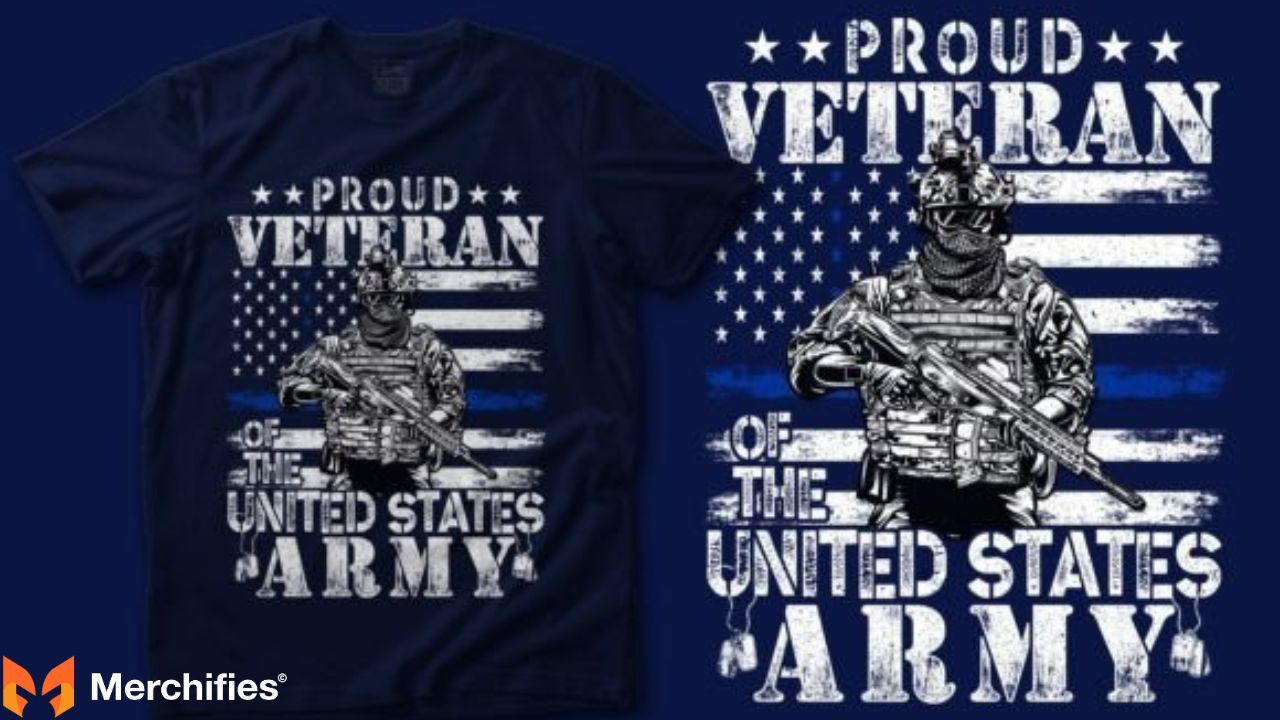
Consider Your Climate and Season
Where you live affects which material works best.
Hot and humid climates need either cotton (for breathability) or polyester (for moisture-wicking). Cotton breathes but can feel heavy when soaked. Polyester stays drier but feels less natural. Try both and see which you prefer.
Cold climates work well with cotton (retains warmth) or tri-blend (comfortable for layering). Polyester alone can feel cold against skin in winter.
Year-round wear benefits from blends offering versatility across seasons. A good CVC blend transitions from summer to winter reasonably well.
Summer events call for lightweight options. Avoid heavy cotton. Choose lightweight polyester or tri-blend that won't feel like wearing a blanket.
Winter layering works best with cotton as a base. It provides warmth and works well under jackets without the static cling of pure polyester.
Budget vs. Quality Trade-offs
Money matters, but false economy costs more long-term.
Budget-conscious ($15-22): 100% cotton. Solid choice despite shrinkage. Acceptable quality. Works fine if you account for fit changes after washing and accept the wrinkles.
Mid-range value ($22-28): Blends. The sweet spot for most buyers. Better than cotton in almost every way for just $4-8 more. Fewer complaints. Longer life. This is where smart money goes.
Premium investment ($28-38): Tri-blend. Highest satisfaction. Worth it for shirts you'll wear frequently. Calculate cost-per-wear: a $35 tri-blend worn 100 times costs $0.35 per wear. A $18 cotton shirt that shrinks badly and only gets worn 30 times costs $0.60 per wear.
False economy happens when you buy cheap cotton to save money, it shrinks or wears out quickly, and you need a replacement. You end up spending more by buying twice.
For favorite designs or shirts representing meaningful service, invest in better material. For event shirts you'll wear once, budget cotton works fine.
Understanding T-Shirt Fit Types
Standard Fit (Classic Fit) Explained
Standard fit is the traditional American t-shirt cut. Boxy construction, roomy through the body, straight sides with no tapering, relaxed through chest and arms.
This cut gained popularity in the '80s and '90s and remains common in budget and work apparel. The armholes are larger and may flare out slightly. The collar opening is wider. The torso is cut straight from chest to hem with no body contouring. The sleeves fit looser around the bicep with more fabric. The overall length tends to be slightly longer than fashion fit.
Standard fit prioritizes comfort and universal appeal over styled appearance. It's more forgiving for broader body types. It works better in hot weather because air circulates in the extra space. It's the safer choice for bulk orders going to mixed groups where you don't know everyone's body type.
This fit works best for older veterans who prefer traditional cuts, people who prioritize comfort over style, broader body types, and anyone who dislikes form-fitting clothing.
Common brands using standard fit include Gildan, Hanes, and Comfort Colors in their classic lines. Visual appearance is casual, relaxed, and traditional—the t-shirt your dad wore in the '90s.
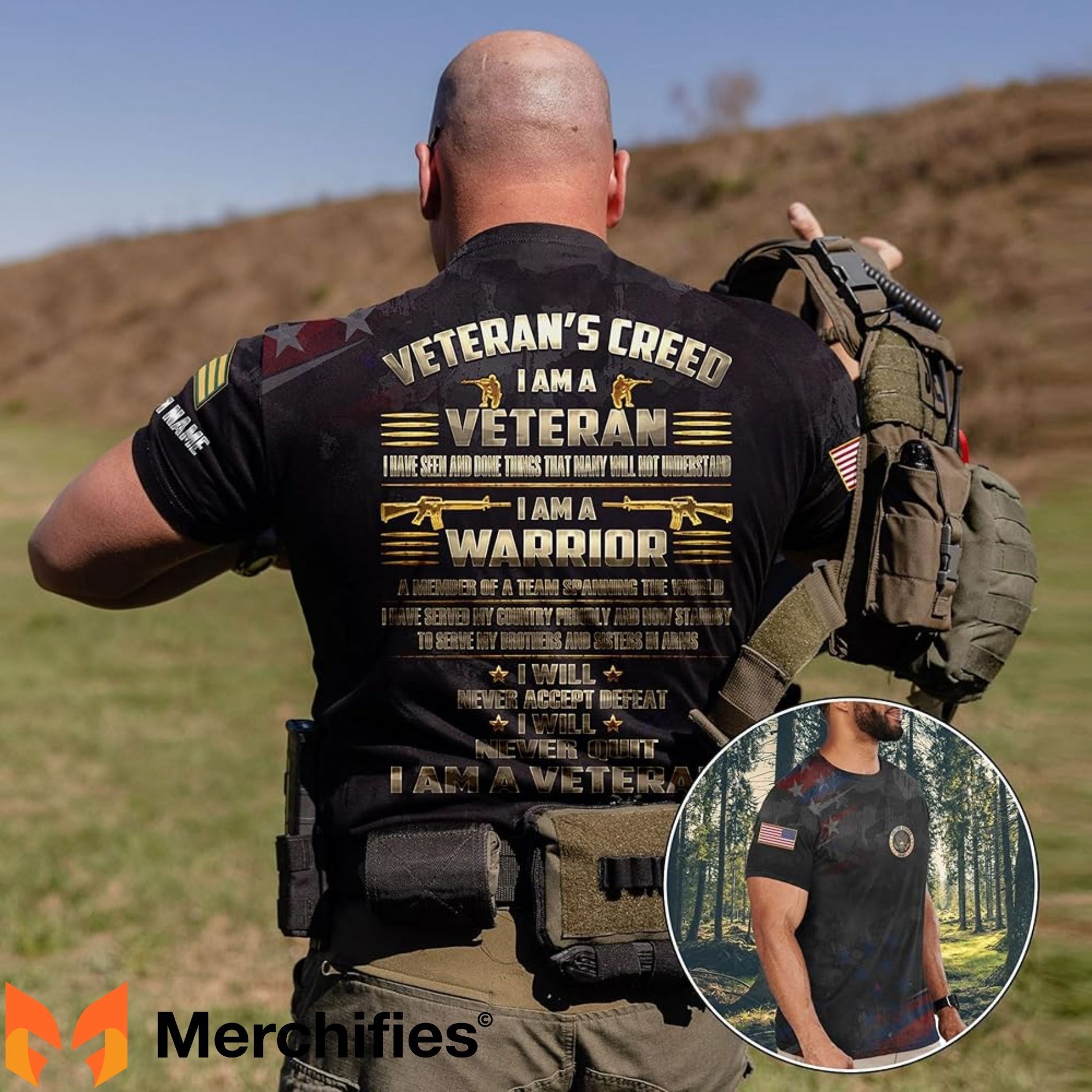
Fashion Fit (Slim Fit) Explained
Fashion fit contours to your body shape. The construction tapers from chest to waist, creating a flattering silhouette. Form-fitting through shoulders, arms, and torso.
Also called slim fit, fitted, retail fit, or modern fit, this cut became popular in the 2000s and now dominates retail and premium apparel. The armholes are snugger and hug your arm without flaring. The collar is narrower and sits closer to your neck. The torso tapers from chest to waist instead of hanging straight. The sleeves hug your bicep with shorter sleeve length. The overall length is slightly shorter than standard for modern proportions.
Fashion fit prioritizes appearance and modern styling over maximum comfort. It's more flattering for athletic and fit body types. It appeals to younger demographics, particularly post-9/11 veterans accustomed to modern fashion. It makes better retail merchandise because it displays more appealingly. And it works for people wanting to show pride in their fitness.
Important note: Fashion fit is more fitted but has stretch, especially in tri-blend. Don't size up unnecessarily thinking you need more room—the fabric gives.
Common brands using fashion fit include Bella+Canvas, Next Level, and anything styled after American Apparel. Visual appearance is modern, styled, and fitted—the t-shirt you see in retail stores.
Key distinction: Standard fit prioritizes comfort and universal appeal. Fashion fit prioritizes appearance and modern styling. Neither is "better." Choose based on your body type and what you want the shirt to look like.
How to Choose Size for Patriotic T-Shirts
The Three Essential Measurements
Accurate measurements eliminate sizing guesswork. You need three key numbers.
Chest circumference is the most critical measurement. Wrap a fabric measuring tape around the fullest part of your chest, under your armpits. Keep the tape parallel to the ground, not angled. Don't pull tight—let it rest comfortably against your body. This measurement determines your size more than anything else.
Shoulder width measures from shoulder bone to shoulder bone across your back. This determines whether the shoulder seams sit correctly or droop onto your arms. Less critical than chest but still important.
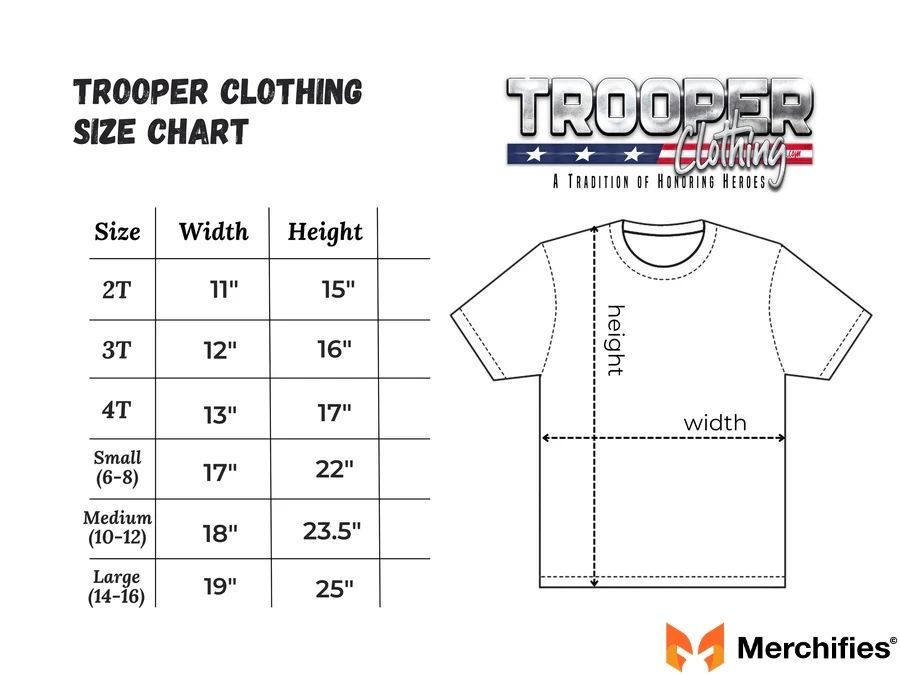
Torso length measures from the base of your collar down to where you want the hem to fall—usually about mid-fly on your pants. This ensures the shirt isn't too long or too short for your height.
Measure properly: Use a fabric measuring tape, not a metal one. Wear a thin t-shirt while measuring, not bare skin or thick clothing. Don't pull the tape tight—it should rest comfortably. Stand naturally without flexing or slouching. Get someone to help you for better accuracy.
Common measurement mistakes: Measuring over thick clothing, pulling the tape too tight, not keeping the tape level around your body, and guessing instead of actually measuring. Take 60 seconds to measure properly and save yourself the return hassle.
Converting Measurements to Size
Most brands use chest measurement as the primary size determinant. Here are standard size ranges:
- Small: 34-36" chest
- Medium: 38-40" chest
- Large: 42-44" chest
- XL: 46-48" chest
- 2XL: 50-52" chest
If you're between sizes, consider your fit type preference and the material's shrinkage. Between Medium and Large with a 40" chest? Go Medium for fitted appearance in non-shrinking tri-blend. Go Large for roomier fit in cotton that will shrink.
Brand variation is real. Different brands run differently. Always check the specific brand's size chart, not just the generic standard. What fits as Large in Gildan might fit as Medium in Bella+Canvas.
Military sizing is more precise than civilian sizing. If you remember your military uniform size, civilian "Large" roughly equals military "Medium-Regular." Civilian sizes generally run one size larger than military equivalents.
The Shrinkage Factor: Should You Size Up?
This decision makes or breaks your satisfaction. Account for shrinkage BEFORE buying.
Shrinkage by material:
- 100% cotton: 5-7% shrinkage (definitely size up)
- Cotton blends (50/50, CVC): 2-4% shrinkage (true to size usually works)
- Tri-blend: 1-2% shrinkage (true to size)
- 100% polyester: 0-1% shrinkage (true to size)
Even "pre-shrunk" labeled cotton will shrink an additional 2-3%. Pre-shrunk means the manufacturer already shrunk it once, but cotton keeps shrinking.
When to size up: Buying 100% cotton AND want looser fit. You measure between sizes AND prefer more room. You plan to wash in hot water (always causes more shrinkage).
When NOT to size up: Buying fashion fit tri-blend (designed to fit snugly, has stretch). You already measure at the top of your size range. You prefer fitted appearance.
Most common mistake: "Most men choose one size too big for comfort reasons. But when looking your best in a t-shirt, it's much more flattering to wear the size that fits best." Sizing up for comfort often results in a sloppy appearance. Size for actual measurements, choose fit type for comfort preference.
The Six Points of Perfect Fit
When trying on a shirt or evaluating photos, check these six fit indicators:
Shoulder seam placement is THE most important fit indicator. The seam should align exactly with the end of your shoulder bone, where your shoulder meets your arm. Too big: the seam droops over your shoulder edge onto your arm. Too small: the seam lands before your shoulder curve starts. Get this right and everything else usually falls into place.
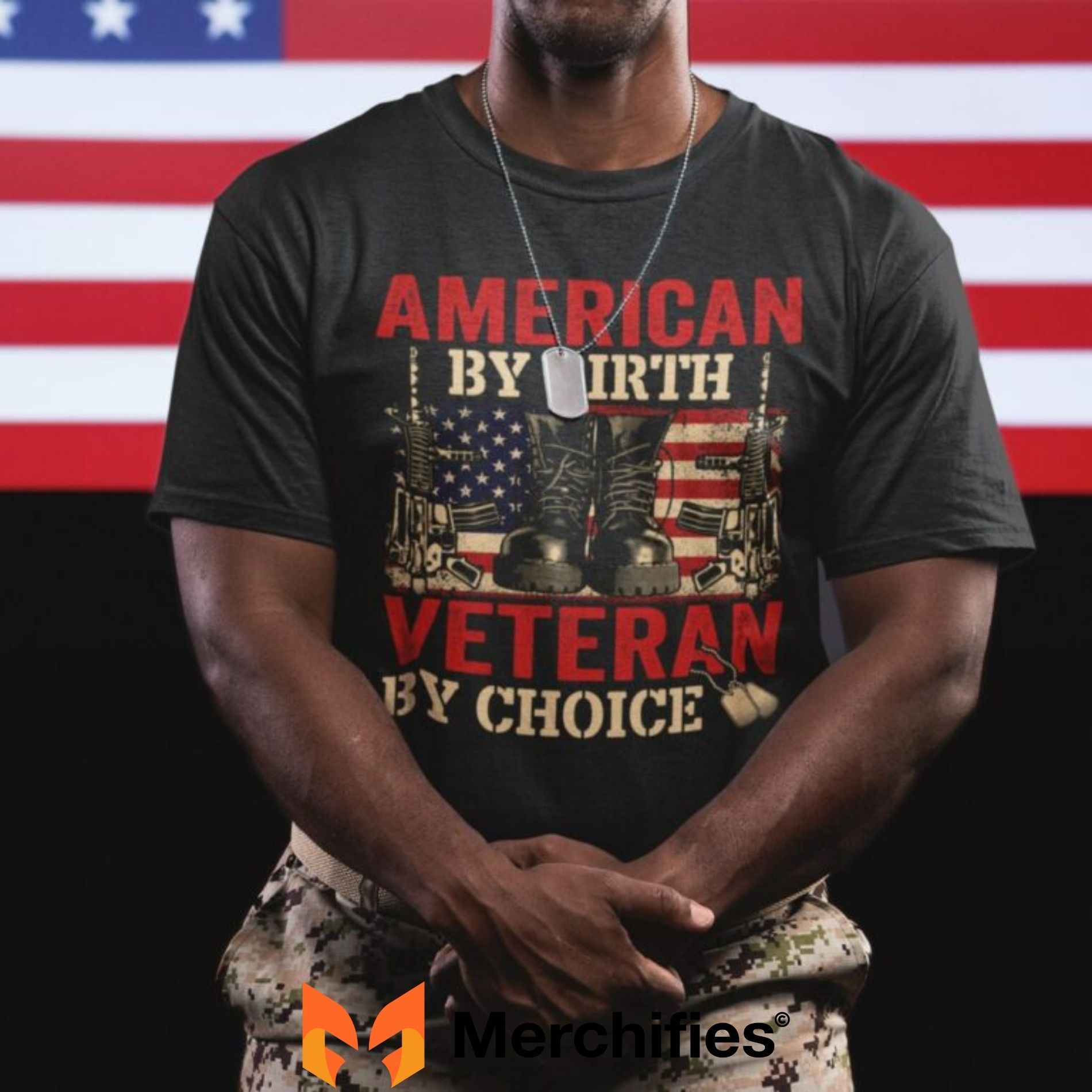
Sleeve length and fit should hit the middle of your bicep. The sleeve should hug your arm without excessive flaring—maximum 2 inches of flare is acceptable. Standard fit has bigger armholes that flare more. Fashion fit is snugger with minimal flaring.
Torso length should cover your waistline and fall at your hips about halfway down your fly. This varies slightly by height but should never go past the top of your inseam (starts looking like a nightgown) and never be so short it exposes your waistband when you raise your arms.
Collar fit means the neckline sits flat above your collarbone without strangling you or gaping open. Standard fit has wider collars. Fashion fit has narrower collars. For V-necks, the point should fall just below your clavicle—men should avoid deep V-necks.
Chest area should be more form-fitting than the lower half but without stretching, bunching, or pulling under your armpits. Fashion fit tapers to hug your body through this area. Standard fit has more room but shouldn't look like a tent.
Torso shape should taper slightly to contour your body in fashion fit or hang relatively straight in standard fit. Side-seamed shirts provide better tapering. Watch for twisting or torquing, which signals tubular construction problems.
Side-Seamed vs. Tubular Construction
Construction method affects fit quality significantly but often gets overlooked when learning how to choose size for patriotic t-shirts.
Tubular Construction
Tubular shirts are made from a tube of fabric that becomes the torso, with the neck and arms sewn in. Cheaper to manufacture because less sewing is involved. The only advantage: you can print on the sides since there's no seam blocking.
The problems: Generic inferior fit because humans aren't tube-shaped. We have shoulders that taper to waists—tubes don't. Torquing happens where the shirt twists after washing, making prints look crooked. Less durable seams overall.
Tubular construction is common in budget brands, bulk promotional items, and cheap veteran apparel. It's acceptable only when budget constraints are severe, you need side-print designs, or you're buying temporary event shirts.
Side-Seamed Construction
Side-seamed shirts have seams running down the underside of the sleeve and down the sides of the torso. Takes longer to manufacture, costs 15-20% more, but delivers significantly better results.
The advantages: Superior fit because seams allow the fabric to contour to body shape. Prevents torquing—the seams support the structure. Easier for printers because seams provide alignment guidelines. More durable overall construction.
Side-seamed construction is common in premium brands (Bella+Canvas, Next Level), fashion fit shirts, and retail merchandise. It's worth the small price increase for significantly better appearance and longevity.
Look for "side-seamed" in product descriptions. If it doesn't specifically say side-seamed, it's probably tubular.
Key takeaway: The best fabric for veteran day shirts should be in side-seamed construction for proper fit. The 15-20% price increase pays for itself in better appearance and longer life.
Practical Buying Scenarios
Scenario 1: First-Time Buyer Wanting Everyday Comfort
You're buying your first veteran support shirt. Comfort matters most. You'll wear it casually.
Best material choice: CVC blend (60/40) or tri-blend. CVC balances comfort with durability at mid-range price. Tri-blend takes comfort to the next level if budget allows.
Why this works: Both minimize shrinkage so sizing stays accurate. Easy care—throw in the wash without worry. Soft enough for all-day wear. Durable enough to last years.
Fit recommendation: Standard fit for your first purchase. More forgiving if your measurements are slightly off. Comfortable without being sloppy.
Sizing approach: Measure your chest, order true to size. Blends don't shrink much (2-4%), so no need to size up unless you're right at the top of a size range.
Budget: $24-30 per shirt. Reasonable investment for something you'll wear regularly.
Brands to consider: Gildan DryBlend (50/50), Next Level CVC, Bella+Canvas tri-blend.
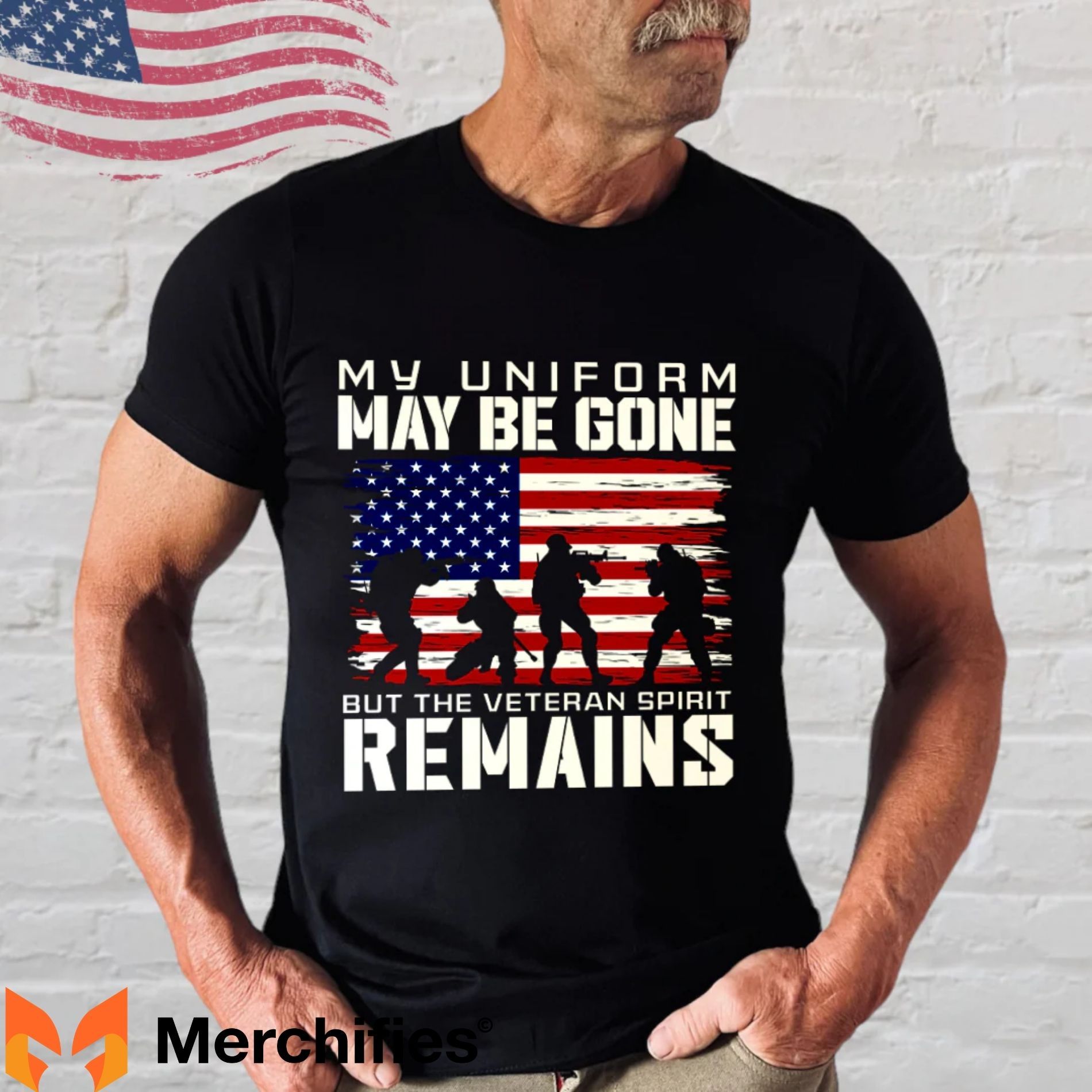
Scenario 2: Active Veteran for Gym/Outdoor Wear
You stay fit. You'll wear this shirt working out, running, hiking. Sweat happens.
Best material choice: 100% polyester or tri-blend. Moisture-wicking is essential. Cotton soaked with sweat feels miserable. These materials keep you drier.
Why this works: Polyester wicks moisture away from skin, dries quickly, allows multiple wears between washes. Tri-blend adds moisture-wicking to premium comfort. Both maintain shape through intense use.
Fit recommendation: Fashion fit. Cleaner lines for athletic body types. Less fabric flapping around during movement. More modern appearance in gym settings.
Sizing approach: True to size. Both materials have stretch. Don't size up—you want the fitted performance feel.
Budget: $22-32 per shirt. Performance features justify the cost.
Brands to consider: Nike Legend, Augusta Sportswear, any tri-blend in athletic cut.
Scenario 3: Buying Bulk for Veterans Group/Event
You're ordering 50+ shirts for a reunion, memorial event, or veterans organization. Budget matters. Sizes vary across the group.
Best material choice: 50/50 blend or 100% cotton. Economical for quantity orders. Universally accepted. Safe choice that won't offend anyone's preferences.
Why this works: Volume pricing makes these materials affordable. Everyone finds them comfortable enough. Cotton is familiar to older veterans. Blends handle the inevitable variety of wash methods across different wearers.
Fit recommendation: Standard fit. Accommodates diverse body types without anyone feeling squeezed or swimming in fabric. The forgiving cut works for everyone from 20-year-old fit veterans to 70-year-old retirees.
Sizing approach: Provide a size chart, let individuals self-select. Order a few extras of common sizes (Large, XL) for on-site swaps. Expect 60% Medium/Large, 30% XL/2XL, 10% Small/3XL.
Budget: $15-22 per shirt with volume discounts. Often can negotiate bulk pricing below retail.
Brands to consider: Gildan Heavy Cotton (G500), Hanes Beefy-T, Comfort Colors for that vintage bulk order feel.
Scenario 4: Premium Gift or Retail Merchandise
You're buying a gift for a veteran you respect, or you're selling shirts as merchandise. Quality matters. First impression is everything.
Best material choice: Tri-blend. The premium feel justifies higher price. Recipients remember quality long after they forget the extra cost. Retail customers expect and appreciate premium materials.
Why this works: Tri-blend feels noticeably better immediately. The soft drape, excellent comfort, and quality construction communicate that you invested in something special. For retail, the elevated feel commands higher prices and fewer returns.
Fit recommendation: Fashion fit. Retail-ready appearance displays better. Modern styling appeals to buyers. Flattering fit increases wear frequency.
Sizing approach: Offer full size range (S-3XL). Include detailed size chart with measurements. Consider offering size exchanges. Premium buyers expect premium service.
Budget: $30-38 per shirt. Price reflects quality. Don't compete on price—compete on quality and satisfaction.
Brands to consider: Bella+Canvas tri-blend (3413), Next Level tri-blend (6010), Threadfast Apparel (102A).
Care Instructions by Fabric Type
Proper care extends shirt life 2-3x. Different materials need different treatment.
Cotton care: Wash in cold water to prevent shrinkage. Tumble dry on low or air dry. Expect 5-7% shrinkage on first wash even with cold water and low heat. Iron if needed—cotton wrinkles naturally. The trade-off for natural comfort is higher maintenance.
Polyester care: Wash in warm or cold water. Tumble dry on low heat—high heat can damage synthetic fibers. Remove from dryer quickly to prevent static cling. Rarely needs ironing. Low maintenance is polyester's advantage.
Blend care (50/50, CVC): Cold water washing works best. Tumble dry on low. More forgiving than pure cotton—won't shrink as dramatically. Minimal ironing needed. This is why blends are popular for work uniforms—easy care.
Tri-blend care: Wash cold to preserve the signature softness. Air dry or use low heat tumble. Do not bleach—damages the rayon component. Fold for storage instead of hanging—hanging can stretch the lightweight fabric. Handle with slightly more care than cotton, but the superior comfort is worth it.
Universal tips for all materials: Turn shirts inside out before washing to protect prints. Avoid fabric softener on polyester blends—it reduces moisture-wicking properties. Wash similar colors together. Don't overload the washer—causes excessive wrinkling.
Frequently Asked Questions
What is the best fabric for veteran shirts?
The best fabric for veteran shirts depends on your use case. For everyday comfort, choose tri-blend (50% polyester, 25% cotton, 25% rayon) or CVC blend (60% cotton, 40% polyester). For athletic activities, choose 100% polyester for superior moisture-wicking. For budget-friendly options, 100% cotton works well despite shrinkage issues. Tri-blend offers the highest satisfaction ratings with exceptional softness, minimal shrinkage (only 1-2%), and excellent durability, making it the premium choice for veteran apparel you'll wear frequently.
How do I choose size for patriotic t-shirts?
To choose size for patriotic t-shirts, measure your chest circumference at the fullest part under your armpits using a fabric measuring tape. Compare this measurement to the brand's specific size chart. If buying 100% cotton, size up because it shrinks 5-7%. For blends and tri-blend, order your true size as they shrink minimally (1-4%). Consider fit type: standard fit runs roomier, fashion fit runs more fitted. When between sizes, size up for looser comfort or size down for fitted appearance.
Should I size up for cotton veteran shirts?
Yes, if buying 100% cotton veteran shirts, size up because cotton shrinks 5-7% after the first wash even in cold water. If you measure at the top of a size range (like 40" chest at the top of Medium range), definitely size up to Large. However, for cotton-poly blends (50/50 or CVC) and tri-blend materials, sizing up isn't necessary because these materials shrink only 1-4%. Always check if the shirt is labeled "pre-shrunk," but still expect 2-3% additional shrinkage with cotton.
Is tri-blend worth the extra cost for veteran shirts?
Yes, tri-blend is worth the extra cost ($28-38 vs $15-22 for basic cotton) if you prioritize comfort and longevity. Tri-blend offers superior softness that customers consistently rate as their favorite, minimal shrinkage (1-2% vs 5-7% for cotton), better wash durability, and often uses recycled fibers making it eco-friendly. Customer satisfaction rates for tri-blend run 60% higher than budget cotton. Calculate cost-per-wear: a $35 tri-blend worn 100 times costs $0.35 per wear, while an $18 cotton shirt that shrinks and only gets worn 30 times costs $0.60 per wear.
What's the difference between standard fit and fashion fit?
Standard fit (classic fit) is boxy, roomy, and straight-cut from chest to hem with larger armholes and wider collar—best for broader body types and comfort priority. Fashion fit (slim fit or fitted) contours the body with tapered torso from chest to waist, snugger arms, and narrower collar—best for athletic builds and modern styling. Standard fit is more forgiving for mixed groups and hot weather; fashion fit is more flattering and retail-ready. Neither is inherently "better"—choose based on your body type and whether you prioritize comfort or appearance.
Does polyester or cotton work better for printed veteran designs?
Both work well but serve different purposes. 100% cotton absorbs ink excellently, providing the smoothest print surface for DTG (direct-to-garment) and screen printing—ideal for vibrant, detailed designs with rich colors. 100% polyester requires special printing methods (sublimation) but offers superior fade resistance—best for designs exposed to sun and repeated washing. For most printed veteran shirts, tri-blend or CVC blends offer the best balance: excellent print surface like cotton plus durability and fade resistance like polyester.
What causes t-shirts to twist after washing?
T-shirts twist (called "torquing") due to tubular construction where the shirt is made from a continuous tube of fabric without side seams. Without seams supporting the structure, the fabric torques during the washing/drying cycle, causing the entire shirt to twist and making prints appear crooked. Solution: Choose side-seamed construction shirts which have seams running down the sides that prevent twisting. Side-seamed shirts cost 15-20% more but maintain their shape and keep print alignment straight after dozens of washes.
How much do different fabrics shrink?
Shrinkage varies significantly by fabric: 100% cotton shrinks 5-7% (most dramatic change), cotton-polyester blends (50/50 or CVC) shrink 2-4%, tri-blend shrinks 1-2%, and 100% polyester shrinks 0-1%. Even "pre-shrunk" cotton will shrink an additional 2-3%. To minimize shrinkage across all fabrics: wash in cold water, tumble dry on low heat or air dry, and remove promptly from dryer. For veteran shirts you want to maintain original size, choose blends or tri-blend over pure cotton.
What is CVC blend and why is it popular?
CVC (Chief Value Cotton) blend is typically 60% cotton and 40% polyester, designed to prioritize cotton's natural soft feel while gaining polyester's performance benefits. It's popular because it offers cotton-like softness and breathability with dramatically reduced shrinkage (2-4% vs 5-7% pure cotton), less wrinkling, better stain resistance, and significantly longer wear life. CVC costs $4-6 more than 100% cotton but delivers superior value through increased durability. It represents the "sweet spot" for veteran shirts balancing comfort, practical performance, and reasonable price.
Are side-seamed shirts really better than tubular?
Yes, side-seamed shirts offer objectively superior fit quality. Tubular construction (no side seams) creates generic, boxy fit because it's literally a tube of fabric—and human bodies aren't tube-shaped. Side-seamed construction allows tailoring that contours to natural body shape for more flattering appearance. Side seams also prevent "torquing" where tubular shirts twist after washing, making graphics look crooked. The 15-20% higher cost for side-seamed construction is justified by better fit, longer-lasting shape retention, and consistent print alignment. For quality veteran shirts, always choose side-seamed construction.
Conclusion
Understanding the best fabric for veteran shirts and how to choose size for patriotic t-shirts eliminates buying mistakes that waste money and leave you with unworn shirts stuffed in drawers.
The material decision comes down to your priorities. Tri-blend for premium comfort and minimal maintenance. CVC blend for balanced value between comfort and durability. 100% cotton for budget-conscious traditional feel. 100% polyester for athletic performance. Each material serves specific needs—choose based on what you'll actually do in the shirt.
The sizing decision requires accurate chest measurement, understanding shrinkage by material type, and choosing between standard fit (comfortable, forgiving) and fashion fit (modern, flattering). Account for 5-7% shrinkage in cotton, 2-4% in blends, 1-2% in tri-blend. Measure properly once and reference that measurement for every purchase.
Quality matters beyond aesthetics. Side-seamed construction provides fit that tubular construction can't match. Proper material selection prevents the shrinkage disaster, the fade-out disappointment, and the "felt great until I washed it" problem.
Armed with this knowledge, you'll buy veteran shirts you actually wear instead of relegating them to the back of your closet. Take 60 seconds to measure your chest. Decide whether comfort, performance, or durability matters most. Match material to that priority. Account for shrinkage. And order with confidence.
Your money. Your choice. Make it count.